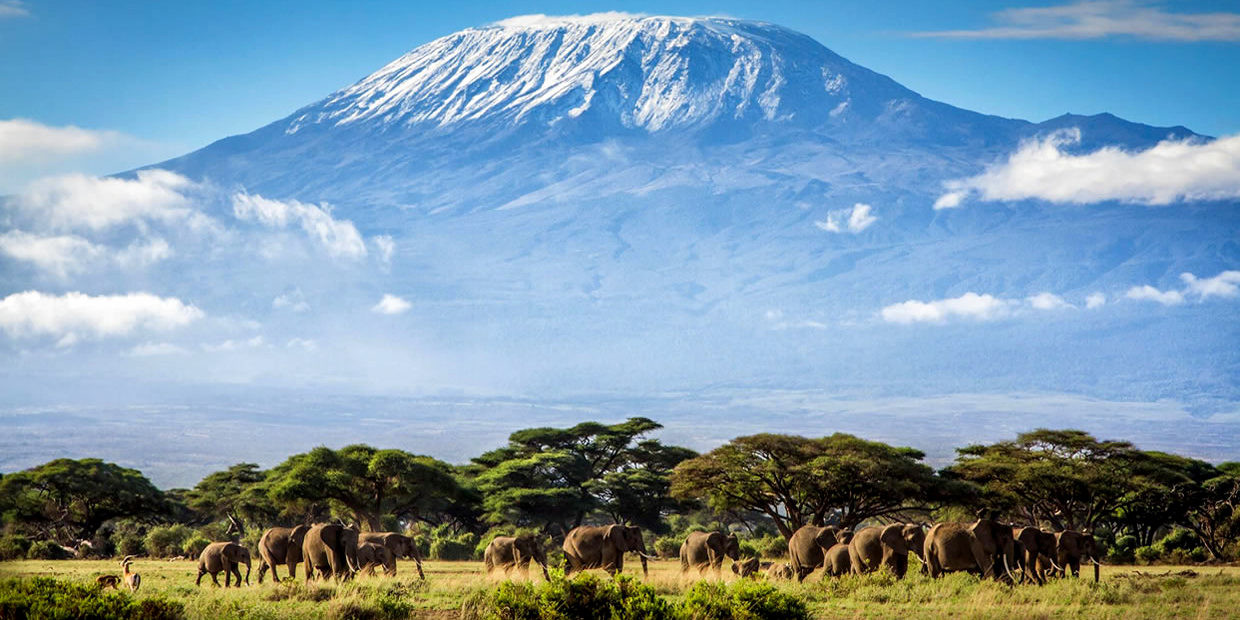Ngorongoro Conservation Area
The Ngorongoro Conservation Area (NCA) is a UNESCO World Heritage Site located in the Crater Highlands area of Tanzania. This remarkable area is famous for its geological, ecological, and cultural importance, providing a unique landscape that is both a natural wonder and a sanctuary for some of Africa's densest populations of large mammals.
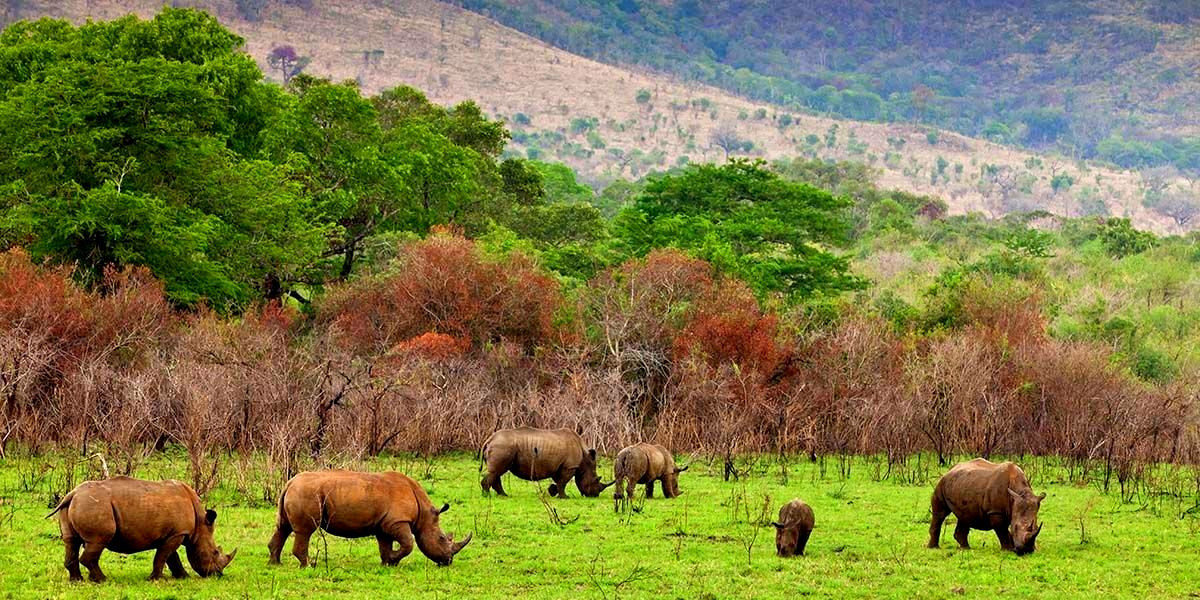
-
Geographical and Geological Features: At the heart of the NCA is the Ngorongoro Crater, the world's largest intact volcanic caldera. The crater floor covers an area of about 260 square kilometers (100 square miles) and is surrounded by steep walls rising 610 meters (2,000 feet) from the crater floor. This natural enclosure fosters an extraordinary variety of wildlife and supports a self-contained ecosystem.
-
Wildlife and Biodiversity: Ngorongoro is renowned for its vibrant wildlife. The crater is home to approximately 25,000 large animals, including some of Tanzania's remaining black rhinos, which are well protected within the crater walls. It also hosts a large population of wildebeests, zebras, buffalo, elands, and warthogs. Predators like lions, hyenas, cheetahs, and leopards are also abundant. The conservation area is also one of the few places in Africa where humans and wildlife coexist as the Maasai people graze their livestock alongside the wild animals.
-
Cultural Significance: The NCA is also culturally significant, as it is inhabited by the Maasai people who have lived in harmony with the land for hundreds of years. The Maasai are pastoralists and are allowed to graze their livestock in the open plains of the conservation area, which helps maintain the balance of the natural ecosystem. Their presence adds a rich cultural layer to the natural beauty and biodiversity of the area.
-
Conservation and Tourism: Tourism in the Ngorongoro Conservation Area is carefully managed to balance human impact and conservation needs. The area's management integrates tourism with conservation and research, allowing for a sustainable model that benefits both the wildlife and the local Maasai communities. Visitors to Ngorongoro can enjoy guided safaris, walking tours, and visits to Maasai villages, offering a comprehensive experience of wildlife viewing and cultural immersion.
-
Unique Aspects: One of the unique aspects of the NCA is its archaeological significance. It includes the Olduvai Gorge, where some of the oldest hominin fossils have been discovered, offering crucial insights into early human evolution. The gorge has been instrumental in furthering our understanding of human ancestry and the development of early tool-making technologies.
The Ngorongoro Conservation Area stands out as a prime example of integrated conservation that includes both cultural heritage and natural preservation. Its stunning landscape, rich wildlife, and enduring cultural traditions make it a must-visit destination for anyone interested in the natural world and human history.
Serengeti National Park
Serengeti National Park, located in northern Tanzania, is one of the most famous wildlife sanctuaries in the world and a UNESCO World Heritage Site. This iconic park is renowned for its vast, open grasslands which allow for excellent wildlife viewing, making it a cornerstone of the Tanzanian safari experience.
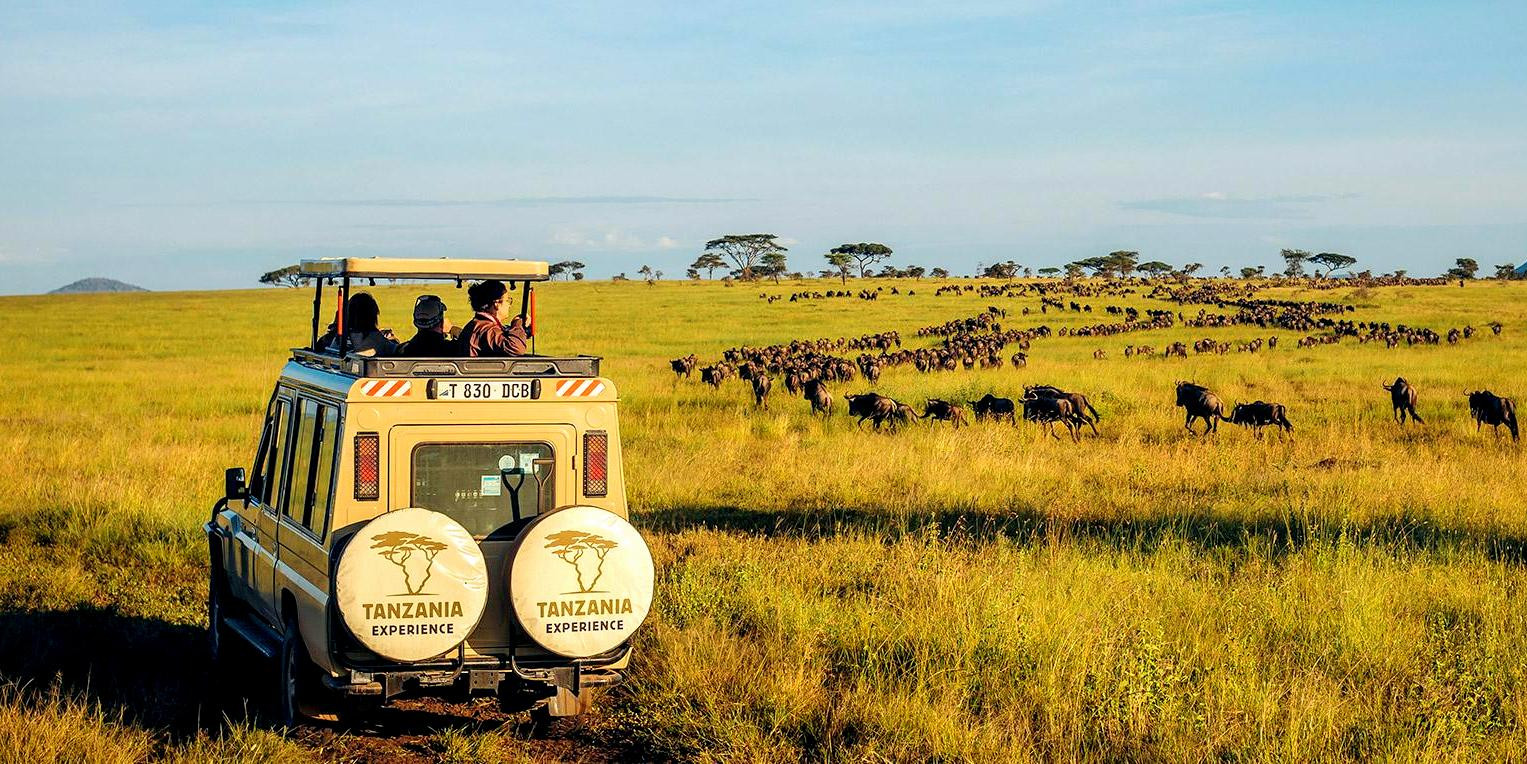
-
Ecological Significance: The Serengeti spans approximately 14,750 square kilometers (5,700 square miles) and encompasses a diverse range of ecosystems, including savannah, woodland, wetland, and the famous Serengeti plains. This diversity supports a vast array of wildlife and is pivotal for the annual Great Migration, which is often described as the greatest wildlife spectacle on earth.
-
The Great Migration: The Great Migration involves the movement of over 1.5 million wildebeest, hundreds of thousands of zebras, and a host of other herbivores across the Serengeti-Mara ecosystem. This mass movement is driven by the animals’ search for fresh grazing and water, and it provides dramatic wildlife viewing opportunities, particularly during river crossing events where crocodiles prey on the migrating herds.
-
Biodiversity: Apart from the migratory species, the Serengeti is home to an impressive number of other wildlife, including lions, leopards, elephants, giraffes, cheetahs, hyenas, and a vast variety of bird species. The park's predator viewing is among the best in Africa, with approximately 3,000 lions that have been studied extensively in the area over several decades.
-
Conservation Efforts: Conservation efforts in the Serengeti are primarily focused on maintaining the habitat and the wildlife corridors that are essential for the Great Migration. Anti-poaching units and strict regulations help protect the area's animals and ensure the integrity of this unique ecosystem.
-
Cultural Impact: The Serengeti is also significant in human history, with various archaeological sites dating back millions of years. These sites suggest that the region was an important area for human evolution, offering insights into early human lifestyles and interactions with the environment.
-
Tourism: Tourism in the Serengeti is well-developed, with numerous lodges and campsites that cater to a range of budgets and preferences. Safari tours can be conducted in vehicles, on foot, or even from hot air balloons, providing visitors with a variety of perspectives on the vast landscape and its inhabitants.
-
Visitor Experience: Visitors to the Serengeti can expect an unforgettable experience, immersing themselves in the rhythm of the African savannah and witnessing the interplay of predator and prey on an epic scale. The best time to visit the park depends on the area; however, for those wishing to witness the Great Migration, the best months are usually from late June to October, when the animals move northwards and cross into Kenya’s Maasai Mara.
Serengeti National Park offers not only a glimpse into the raw and untamed wilderness of Africa but also a profound connection with the Earth’s natural history, preserving its timeless allure and inspiring generations of nature enthusiasts and conservationists.
Kilimanjaro National Park
Kilimanjaro National Park, established in 1973 to protect the majestic Mount Kilimanjaro and its environment, is one of Tanzania's most iconic and visited natural landscapes. This UNESCO World Heritage Site not only features the highest peak in Africa, Mount Kilimanjaro, but also offers an array of ecological systems, wildlife, and breathtaking views that draw climbers and tourists from around the globe.
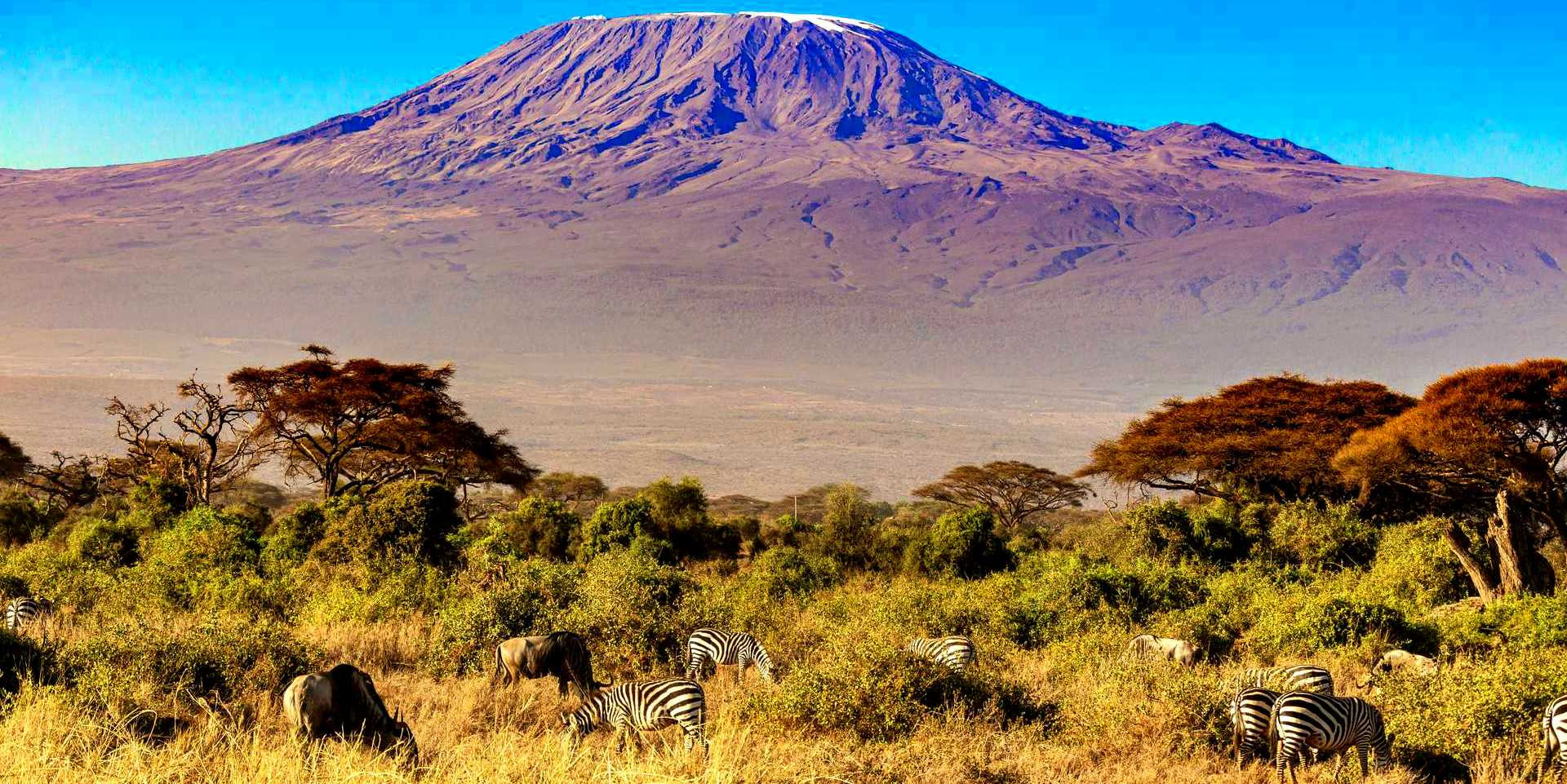
-
Mount Kilimanjaro: The centerpiece of the park is Mount Kilimanjaro, standing at an impressive altitude of 5,895 meters (19,341 feet) above sea level. It is not only Africa's tallest peak but also the world's highest free-standing mountain. The mountain's massive snow-capped summit, Uhuru Peak, provides one of the most iconic images of Africa.
-
Ecological Diversity: Kilimanjaro National Park spans an area of about 1,688 square kilometers (652 square miles), encompassing rich habitats that range from lush rainforest to alpine desert. As visitors ascend the mountain, they travel through distinct climatic zones, each hosting unique species of flora and fauna. The lowland slopes are covered in montane forest, home to elephants, leopards, and buffaloes, while the alpine zone is characterized by dramatic rock formations and hardy plants like the giant lobelia and groundsel.
-
Wildlife and Conservation: While Kilimanjaro is not primarily known for wildlife in comparison to other Tanzanian parks, the forests around the lower parts of the mountain are home to various species of birds and mammals. Elephants, leopards, buffaloes, and the endangered Abbott's duiker are a few of the creatures that might be seen. The park's biodiversity is closely monitored, and conservation efforts are focused on preserving its fragile ecosystems, particularly against the threats of climate change and deforestation.
-
Tourism and Cultural Impact: Tourism is vital for the region, providing significant economic benefits to local communities and funding for conservation initiatives. Climbing Kilimanjaro is a bucket-list adventure for many, combining physical challenge with the spiritual uplift of standing atop one of the globe's most legendary peaks.
-
Best Time to Visit: The best times to climb Kilimanjaro are during the dry seasons: from late June to October and from late December to mid-March. These periods offer the clearest and warmest conditions, making the trekking experience more pleasant.
Kilimanjaro National Park is more than just a climbing destination; it's a symbol of natural beauty and resilience, offering a transformative experience that resonates with those who reach its heights and explore its diverse environments.
Zanzibar Stone Town
Zanzibar Stone Town, also known simply as Stone Town, is the historical heart of the island of Zanzibar, which is part of Tanzania. This ancient city is a prominent example of the Swahili coastal trading towns of East Africa. With its rich history, intricate architecture, and vibrant culture, Stone Town has been recognized as a UNESCO World Heritage Site since 2000, owing to its outstanding universal value and cultural significance.
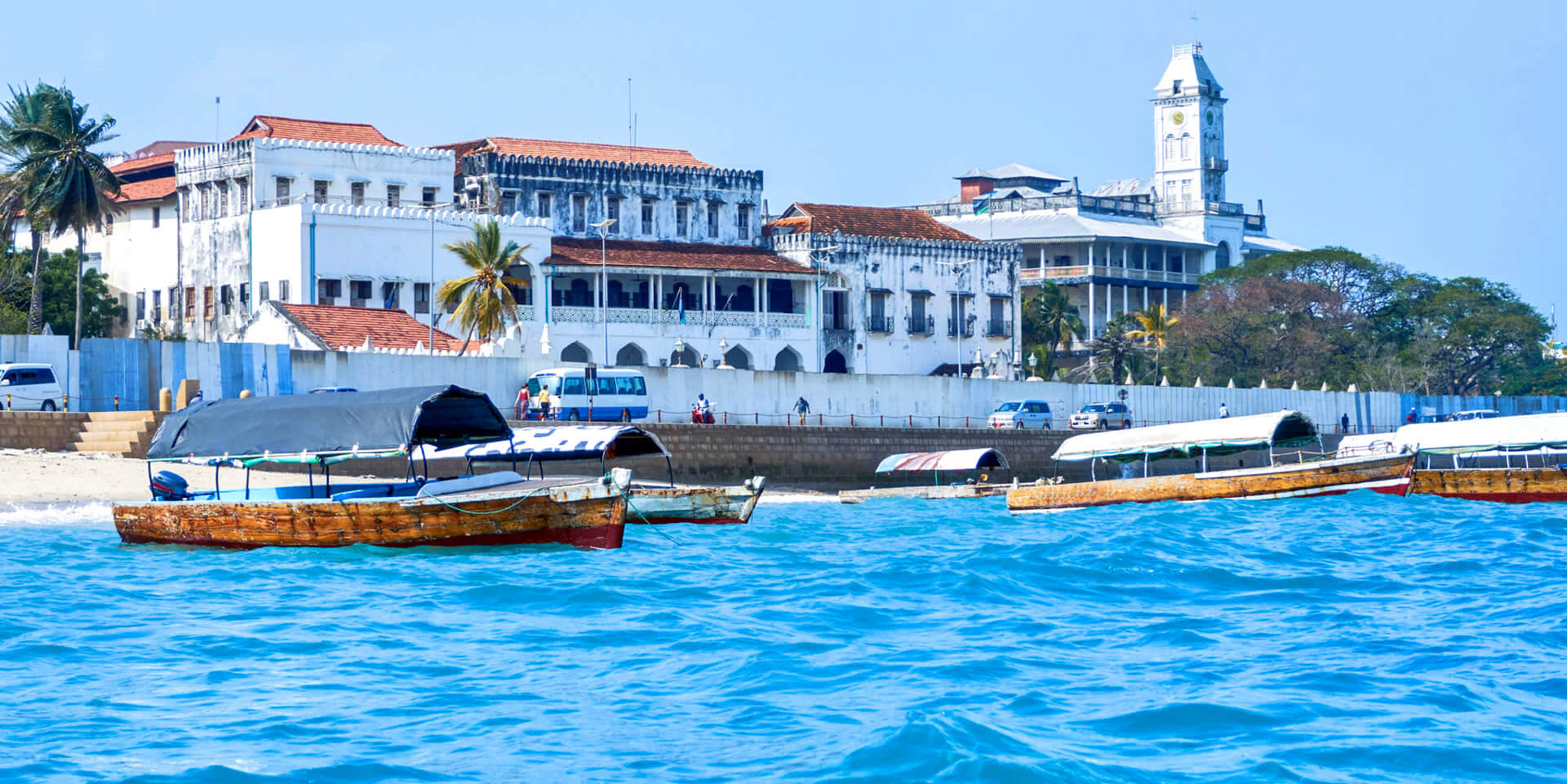
-
Historical Background: Stone Town's history is a tapestry of various influences, stemming from Arab, Persian, Indian, and European involvement in the region. It developed from a fishing village in the 8th century into a thriving hub of the spice and slave trades by the 19th century. The city's layout with winding lanes, bustling bazaars, and an ornate waterfront is indicative of the many layers of history that have shaped this place over centuries.
-
Architectural Significance: The architecture of Stone Town is a blend of various styles, which reflect its multicultural history. Buildings are primarily constructed from coral stone, giving the town its name. You'll find beautiful carved wooden doors, some with brass studs to protect against elephants — a throwback to when such animals were used in demolitions during war times. The balconies, verandas, and intricately carved window frames display the influence of Arab and Indian aesthetics. Key landmarks include the House of Wonders, the largest and tallest building in Stone Town, which served as a ceremonial palace for the Sultan, and the Old Fort, a fortification from the late 17th century.
-
Cultural Tapestry: The culture in Stone Town is vibrant and a melting pot of the diverse communities that have settled in the island over the centuries. Swahili, Arabic, Persian, and European influences are evident in the local cuisine, language, music, and daily life. The Forodhani Gardens on the waterfront are a popular gathering place in the evening where locals and tourists alike enjoy fresh seafood and Zanzibari recipes.
-
Conservation Challenges: Stone Town faces significant conservation challenges due to its age and the fragile nature of its coral stone constructions. Issues like erosion, pollution, and the effects of increasing tourism demand ongoing attention and resources for sustainable management and preservation.
-
Tourism: Tourism plays a critical role in the economy of Zanzibar and Stone Town is at the heart of this industry. Visitors are drawn to the city's historical sites, lively markets, and cultural festivals. Walking tours are a popular way to explore the narrow, labyrinth-like streets and get a sense of the history and daily life in the city. The annual Zanzibar International Film Festival and Sauti za Busara, an African music festival, are key attractions that showcase the cultural richness of the region.
A visit to Stone Town offers a deep dive into the history and culture of Zanzibar. It's a place where the past lingers in the shadows of alleyways, where every building has a story, and where the vibrant spirit of Zanzibar comes to life. Whether exploring the historic sites, shopping for spices and handicrafts in the bazaars, or enjoying a sunset dhow cruise, Stone Town provides a unique and unforgettable experience of the Swahili coast's heritage.
Selous Game Reserve
Selous Game Reserve, now officially known as Nyerere National Park, is one of Africa’s largest and oldest protected areas, renowned for its undisturbed wilderness and diverse wildlife. Located in southern Tanzania, the reserve was originally established in 1922 and named after the famous British explorer and conservationist, Sir Frederick Selous. It covers an immense area of about 50,000 square kilometers (19,305 square miles), offering a vast landscape of rolling savannah, open grasslands, dense forests, and extensive wetlands.
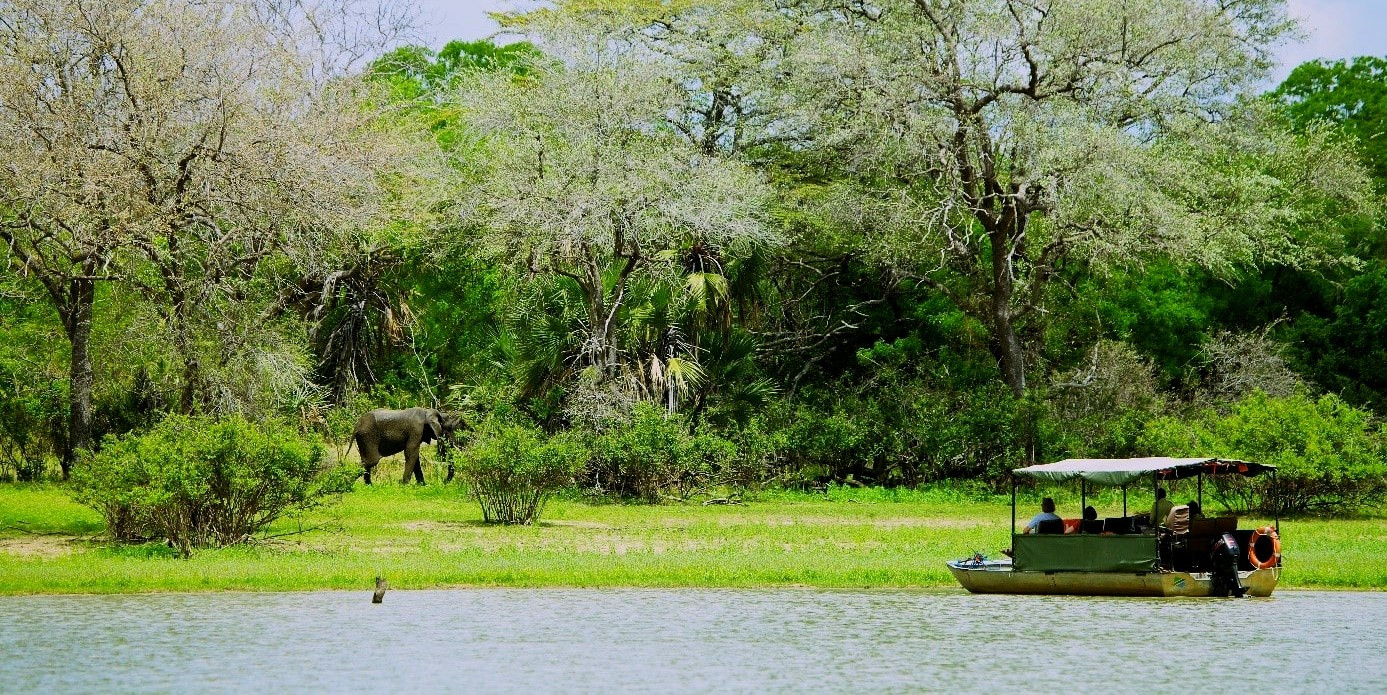
-
Ecological and Wildlife Diversity: Selous Game Reserve is celebrated for its rich biodiversity and high concentration of game. It hosts some of the most significant populations of elephants, black rhinos, cheetahs, giraffes, hippos, and crocodiles in Africa. Additionally, the reserve is a haven for over 350 species of birds, making it a popular destination for bird watchers.
-
Conservation Significance: Selous Game Reserve has been designated a UNESCO World Heritage Site due to its wildlife diversity and its relatively undisturbed nature. It is one of the few large wilderness areas remaining in Africa, providing a critical habitat for a range of species, some of which are endangered or rarely seen elsewhere. The park's management practices focus on balancing conservation with minimal human interference, although challenges such as poaching and the demand for natural resources continue to pose threats.
-
Unique Aspects: One of the unique aspects of Selous is its allowance for walking safaris and fly camping. These activities provide an immersive experience that is not typically available in most other African reserves. Additionally, the reserve's remote location means that visitors often feel as though they have the vast wilderness almost to themselves, which adds to the allure and sense of adventure.
-
Best Time to Visit: The best time to visit Selous Game Reserve is during the dry season from June to October, when wildlife congregates around the Rufiji River and other water bodies, making them easier to spot. The weather during this period is also more conducive to safari activities, with fewer mosquitoes and generally cooler temperatures.
Selous Game Reserve offers a truly authentic safari experience, characterized by vast, unspoiled landscapes and rich wildlife. It remains one of the best places in Africa to enjoy solitude and the raw beauty of nature without the crowds found in more commercialized parks.
Kondoa Rock-Art Sites
The Kondoa Rock-Art Sites, located in central Tanzania, are a remarkable collection of ancient paintings spread over a vast area of the Maasai steppes. These rock paintings, found in approximately 200 natural caves in the Kondoa district, offer a fascinating glimpse into the lives and beliefs of the people who inhabited the area over the past 2,000 years. Due to their cultural and historical significance, the sites were designated a UNESCO World Heritage Site in 2006.
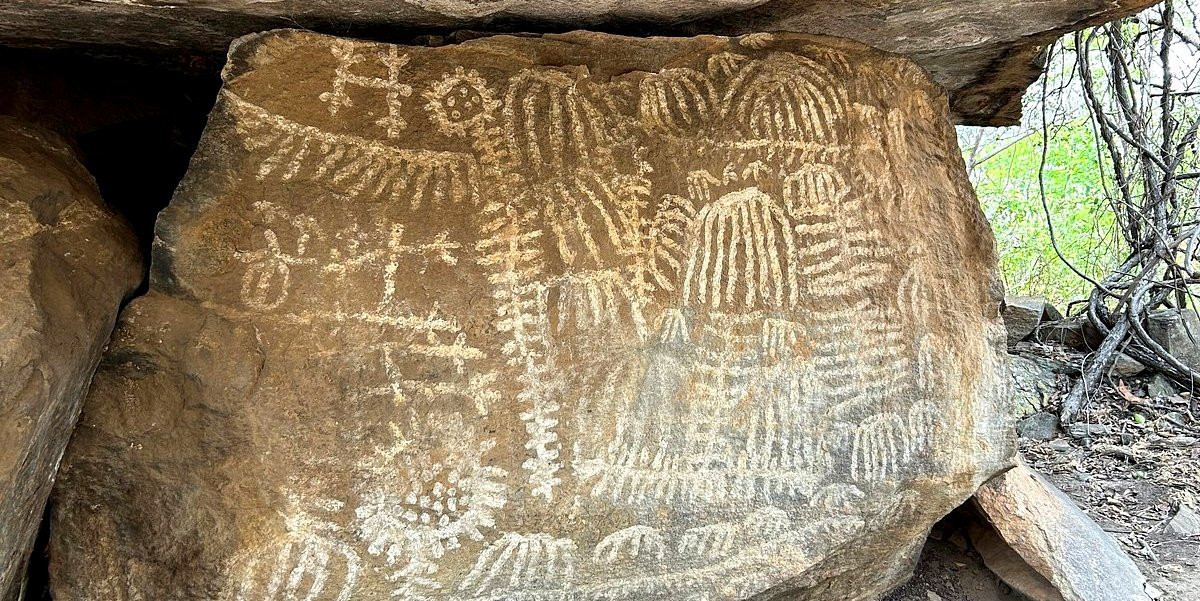
-
Historical and Cultural Significance: The rock paintings of Kondoa are believed to have been created by a succession of peoples living in the area, including hunter-gatherers and later agro-pastoralist communities. The artworks depict a wide range of subjects, from simple handprints and geometric patterns to detailed scenes of animals, human figures, and various social activities. These paintings not only provide insights into the daily lives of the ancient inhabitants but also their spiritual beliefs, rituals, and cosmology.
-
Artistic Features: The art at the Kondoa Rock-Art Sites varies significantly in style and subject matter, reflecting changes in cultural practices and interactions over centuries. Some of the older paintings use a red pigment made from ochre, while later works also incorporate white, black, and yellow, indicating a broadening palette over time. The sites are unique in that they have preserved the continuity and change in rock art styles, unlike many other regions in Africa.
-
Preservation and Research: Despite their historical importance, the Kondoa rock paintings have faced threats from erosion, human activity, and natural decay. Efforts to preserve the sites have been ongoing, involving local communities in the conservation process and educating visitors on the importance of preserving such irreplaceable cultural heritage. Research and archaeological investigations continue to uncover the meanings behind the paintings and the history of the people who made them.
-
Tourism and Accessibility: The Kondoa Rock-Art Sites are accessible to tourists and are becoming an increasingly popular destination for those interested in archaeology, history, and indigenous art. Guided tours are available, offering visitors a chance to explore a selection of the painted caves while learning about the techniques used and the interpretations of the images.
-
Best Time to Visit: The best time to visit the Kondoa Rock-Art Sites is during the dry season, from June to early October. During this period, the weather is more favorable for hiking and exploring the caves, as the paths are less slippery and the vegetation is sparser, improving visibility.
The Kondoa Rock-Art Sites are not only a window into the ancient world of East Africa but also a testament to the region’s rich cultural tapestry. They represent an invaluable link to the human past and continue to inspire and educate those who visit about the enduring nature of human expression through art.
Tips for Heritage sites in Tanzania
Visiting heritage sites in Tanzania offers a remarkable opportunity to explore rich ecosystems, ancient cultures, and archaeological treasures. To make the most of your visit to these sites, here are some practical tips to enhance your experience and ensure a responsible and enjoyable trip:
-
Research Before You Go: Learn about the historical, cultural, and ecological significance of the sites you plan to visit. Understanding the background and importance of each location will enrich your experience and appreciation.
-
Hire Local Guides: Employing local guides not only supports the community economically but also provides you with in-depth knowledge from residents who are intimately familiar with the terrain, wildlife, and history.
-
Respect Local Customs and Cultures: Many heritage sites are also sacred or culturally significant to the local communities. Dress modestly, ask permission before taking photographs, and show respect towards ceremonial or sacred sites.
-
Pack Appropriately: Be prepared for the climate and terrain. For instance, bring breathable, light-colored clothing for hot and sunny days, sturdy footwear for trekking, and layers for cooler temperatures at higher elevations like Kilimanjaro.
-
Environmental Conservation: Stick to marked trails to avoid disturbing native flora and fauna. Always carry out your trash, and consider using eco-friendly products during your visit.
-
Health Precautions: Ensure you're up to date with vaccinations recommended for travelers to Tanzania, such as yellow fever and malaria prophylaxis. Carry a basic first-aid kit and stay hydrated, especially in hot and arid areas.
-
Plan Your Visit During Optimal Seasons: Timing can significantly affect your experience. For instance, the dry seasons (June to October and December to March) are generally the best times for wildlife viewing in parks like Serengeti and Ngorongoro.
-
Stay Safe: Follow park rules and guidelines, especially in wildlife areas. Keep a safe distance from animals, and always stay inside the vehicle unless your guide advises otherwise.
-
Support Conservation Efforts: Consider contributing to conservation projects or community initiatives. Even small contributions can help fund wildlife protection and community benefits like education and healthcare.
-
Documentation and Permissions: Some sites may require permits or have restrictions on access. Check in advance and make sure to have all necessary permissions for a smooth visit.
-
Take Advantage of Early Mornings: Early morning is often the best time to visit these sites, as you can avoid the heat of the day and the larger crowds, while also catching wildlife when it is most active.
By following these tips, you can ensure that your visit to Tanzania's heritage sites is not only memorable but also respectful and supportive of local communities and ecosystems.
Tanzania's heritage sites offer an extraordinary glimpse into both the natural world and human history, showcasing stunning landscapes, rich biodiversity, and deep cultural significance. From the expansive Serengeti, famous for its wildlife migrations, to the historical depths of Zanzibar's Stone Town, each site provides unique insights and experiences that are as educational as they are awe-inspiring. As visitors explore these locations, they contribute to the preservation and appreciation of these invaluable assets, ensuring that they will continue to enchant and educate future generations. Whether it’s witnessing the majestic wildlife, trekking through diverse ecosystems, or immersing in the rich local cultures, Tanzania’s heritage sites are not just destinations; they are vibrant testimonies to the earth’s and humanity’s intertwined histories. Each visit leaves a lasting impression, promoting a deeper understanding of our world and our place within it, making Tanzania a must-visit for anyone committed to global heritage and natural conservation.
FAQs for Heritage sites in Tanzania
Q: When is the best time to visit heritage sites in Tanzania?
A: The best time generally depends on what you want to see and do. For wildlife viewing, especially to catch the Great Migration in the Serengeti, the best months are from June to October. To climb Mount Kilimanjaro, the best times are during the dry seasons from January to March and June to October.
Q: Do I need a guide to visit these heritage sites?
A: While some sites like Zanzibar Stone Town can be explored independently, sites like Ngorongoro and Serengeti benefit greatly from having a knowledgeable guide. Guides can provide insightful commentary, ensure safety, and help spot wildlife.
Q: What are the entry requirements for these parks and sites?
A: Most national parks and heritage sites in Tanzania require visitors to pay an entry fee. These fees contribute to conservation efforts and community welfare. Ensure to check the latest fee structure and park rules before your visit.
Q: How can I respect the local culture while visiting?
A: Dress modestly, especially in rural and Muslim-majority areas like Zanzibar. Ask for permission before taking photos of local people or their property. Learn a few basic phrases in Swahili to show respect and enhance your interaction with the locals.
Q: What should I pack for a visit to Tanzania’s heritage sites?
A: Pack light, breathable clothing for the daytime and warmer layers for cooler mornings and evenings. Include a good pair of walking shoes or boots, a sun hat, sunscreen, a reusable water bottle, and insect repellent.
Q: Are there any health precautions I should take?
A: Consult with a travel doctor for recommended vaccinations and health precautions, such as malaria prophylaxis. Always drink bottled or filtered water, and carry basic first-aid supplies.
Q: Can I participate in conservation efforts during my visit?
A: Many parks and reserves offer opportunities to contribute to conservation, whether through direct donations, educational tours, or volunteering. Ask your tour operator about including such activities in your itinerary.
Q: What are the rules about interacting with wildlife?
A: Maintain a safe distance from all wildlife, follow park guidelines, and never feed the animals. Staying in vehicles during safaris is mandatory unless otherwise stated.
Q: How can I make my visit more sustainable?
A: Support eco-friendly lodges and tour operators, minimize plastic use, and ensure that your activities do not harm the environment or local communities. Opt for experiences that give back to the local economy and conservation efforts.
For the Nepal tour, please click here.
If you are looking for different kinds of Nepal Tours or Trekking Packages, feel free to contact us.
